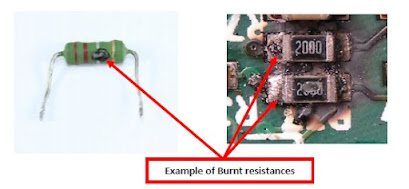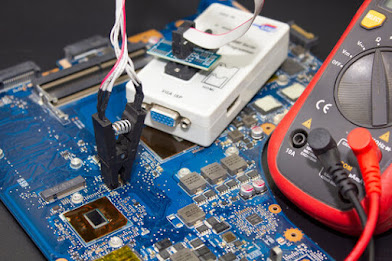What is Motherboard: Function, Components & Types of Motherboard!
Motherboard Definition!!
 Definition – Here, We will define motherboard with simple term that is used in computer. Motherboard is also known as different names (meaning) such as
“Main Board” or “Logical Board” “MB”, “Mboard”, “Mobo”, “Mobd”,
“Backplane board”, “Base Board”, “Main Circuit Board”, “Planar
Board”, “System Board”. On the computer motherboard,
design very thin layers of may be copper or aluminum, and it also
called the “traces”. Various electronic circuits are printed on the
motherboard; with using those circuits can be done communication through buses in between all components of computers.
Definition – Here, We will define motherboard with simple term that is used in computer. Motherboard is also known as different names (meaning) such as
“Main Board” or “Logical Board” “MB”, “Mboard”, “Mobo”, “Mobd”,
“Backplane board”, “Base Board”, “Main Circuit Board”, “Planar
Board”, “System Board”. On the computer motherboard,
design very thin layers of may be copper or aluminum, and it also
called the “traces”. Various electronic circuits are printed on the
motherboard; with using those circuits can be done communication through buses in between all components of computers.
Motherboard is backbone of computer as well as also called the “HUB”. My motherboard allows attaching all essential parts of computer such as CPU (central processing unit), memory (internal & external), sockets, ports and connectors for connecting the all input and output peripheral.
‘Computer Motherboard’ Tutorial Headlines:
In this section, we will show you all headlines about this entire article; you can check them as your choice; below shown all:
- Motherboard Definition!!
- Types of Motherboard
- Types of Motherboard Form Factors
- Motherboard Components
- Motherboard Architecture and its Layout
- Parts of Motherboard and its Function
- Functions of Motherboard
- Features of Motherboard
Types of Motherboard
There are two different types of computer motherboard, and below explain each one.
Question – How many types of motherboard?
- Answer – Two types of motherboard.
Non-integrated Motherboard
Mostly, traditional motherboard were designed as non- integration. These types of motherboard were not support directly of various connectors such as I/O port connectors, hard drive connectors, CD drive connectors, and more. Use the expansion board for connecting those connectors on those types of motherboards, so its case has more space for using the external expansion cards. If any components gets defect then they can be repair and maintain with low cost.
Integrated Motherboard
Today, all motherboards are designed as integration. These types of motherboard no need external expansion card because all ports and connectors such as Serial and parallel ports, IDE, CD drive , and more are embedded on the motherboard but its repair and maintenance is costly to non integration motherboard. There are some features like as well accessibility, fast speed, and cost effective along with their rich features.
Types of Motherboard Form Factors
In Motherboard form factor, measure various factors such as logical design, size, its components, and power supply connectors placement in the motherboard.
Types of Motherboard according to Motherboard form factors:
likely Asked Questions
What is a motherboard in a computer?
Motherboard is a main printed circuit board of computer. it is also known as “Logical Board” “MB”, “Mboard”, “Mobo”, “Mobd”, “Backplane board”, “Base Board”, “Main Circuit Board”, “Planar Board”, “System Board”. The motherboard is the backbone of the communication connectivity point. All components and external peripherals are attached on the motherboard.
Why is it called motherboard?
It is known a motherboard because it is the main circuit board in your PC, and it can be extended with getting to plug in other circuit board; and these extensions are known as daughter boards.
Where is motherboard located?
Computer motherboard is located inside your computer case and whereas mostly all parts and computer peripheral attach.
What does motherboard form factor mean?
The form factor represents the size, configuration, or physical arrangement of a computing device.
What are the 3 main form factors for motherboards?
There are main form factors for motherboards like as Mini-ITX, MicroATX and ATX.
What are the 6 different types of motherboard and their functions?
There are 11 different types of computer motherboard according to Motherboard form factors such as:
- AT Motherboard
- Baby AT Motherboard
- XT Motherboard
- Fully ATX Motherboard
- Micro-ATX Motherboard
- Flex-ATX
- LPX Motherboard
- BTX Motherboard
- Pico BTX Motherboard
- Mini ITX Motherboard
- E-ATX Motherboard
Above in this post, we already explained each one with their functions; you can read them.
What type of motherboard is good for gaming?
Best AMD Gaming Motherboards: X570(S), B550, TRX40, X470 and B450.
What are the main components on the motherboard and their functions?
There are various components of motherboard like as: PS/2 Connector, USB Connector, Parallel Port, CPU Chip, CPU Socket, RAM Slot, Floppy Controller, IDE Controller, Cabinet Front Buttons, PCI Slot, ISA Slot, CMOS Battery, AGP Slot, CPU Slot, Switches, Jumpers, and so on.
What are the 3 main parts of motherboard?
Motherboard contains many parts but 3 most important parts of computer motherboard like as processor, memory, and expansion slots.
What are the parts and function of motherboard?
Through this article, already we have been explained all parts of motherboard and their function as well; you can read them.
What are the main functions of motherboard in computer?
The main function of motherboard is to provide the best logical layout because all important processing components of computer ( Central Processing Unit (CPU), system memory (RAM) and graphics card) are embedded on motherboard, and motherboard create interface between in all components. It is known as Components’ Hub.
Where is a motherboard used?
A motherboard is used to allow connecting various computer components direct or indirect. There are some peripherals such as printers, keyboard, audio jacks, hard drives and mouse. Those are connecting directly to motherboard via various ports, sockets, and connectors.
What are the motherboard features explained?
- Motherboard has various varieties then users can select as per need.
- Motherboard is supportable to single CPU along with some kinds of components.
- Motherboard allows to expansion cards, and with using those cards users can use extra functionalities of motherboard.
- Motherboard’ layout is designed very simple because user can change any components of motherboard without hiring any expert.







Comments
Post a Comment